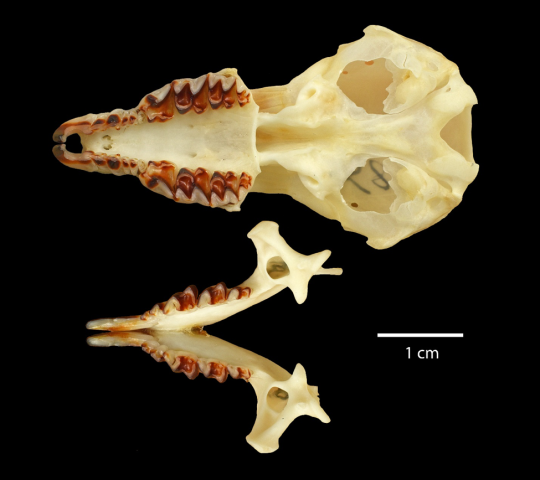
By John Wible
Some shrews have white teeth, while others, including our local northern short-tailed shrew, Blarina brevicauda, have a mixture of dark red and white patches on all their teeth. The dark red marks the presence of iron in the tooth enamel, in contrast to the white without.
Why? It turns out that the concentration of iron is not uniform across all teeth, but is highest on those parts of the teeth that do the most crushing and grinding during chewing. Because of that, the iron in the pigmented enamel is thought to reinforce those high stress surfaces, helping to prolong the life of the tooth. That is important for an animal that is born with its adult (permanent) teeth, having shed its baby (deciduous) teeth in utero. And for an animal with a voracious appetite, where finding the next meal in a hurry is necessary to maintain its high metabolic rate. Interestingly, the shrews that don’t have dark red teeth have a lower metabolic rate than those with. The juxtaposition of dark red and white enamel also helps to keep cutting edges sharp as the softer white enamel wears faster than the dark red. There is only one other group of living mammals that has pigmented enamel, rodents, but unlike the shrews, it is only on their incisors and not all teeth.
No matter what it is for, the shrew’s dark red enamel makes for a mouthful of beautiful, non-pearly white teeth!
John Wible, PhD, is the curator of the Section of Mammals at Carnegie Museum of Natural History. John’s research is focused on the tree of life of mammals, understanding the evolutionary relationships between living and extinct taxa, and how the mammalian fauna on Earth got to be the way it is today. He uses his expertise on the anatomy of living mammals to reconstruct the lifeways of extinct mammals. John lives with his wife and two sons in a house full of cats and rabbits in Ross Township.
